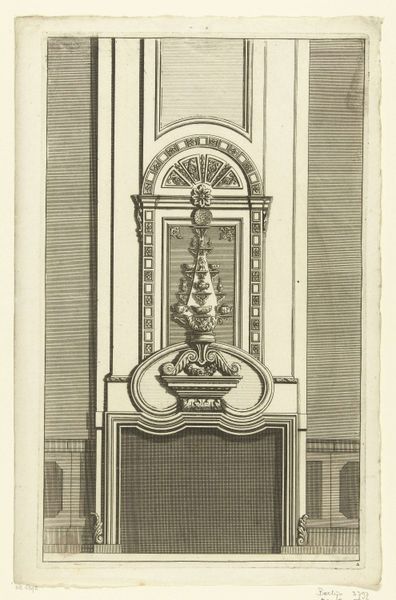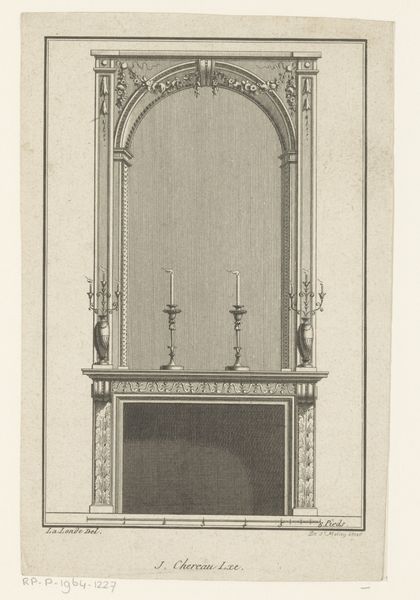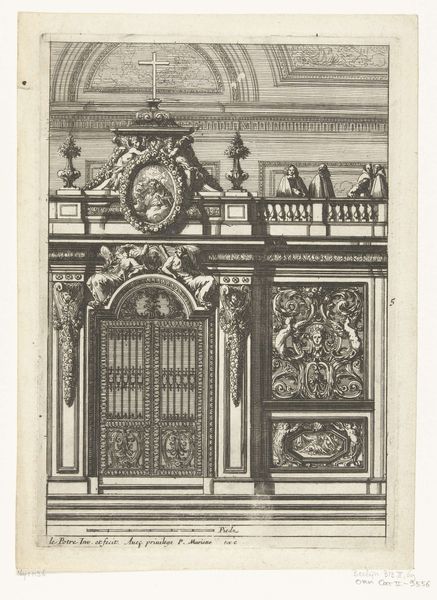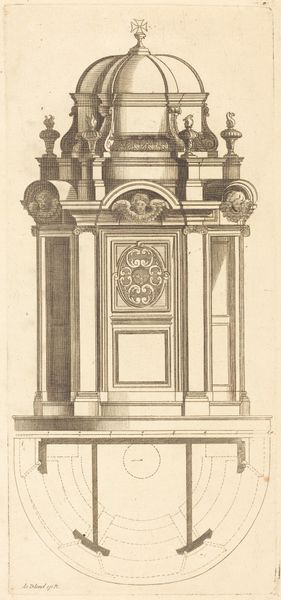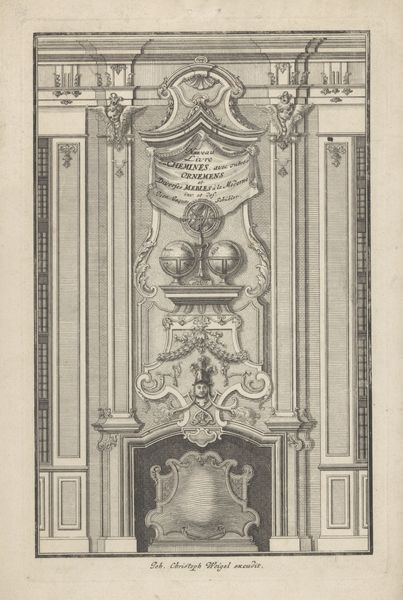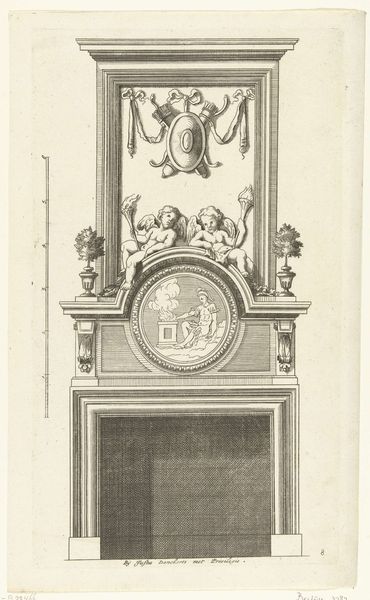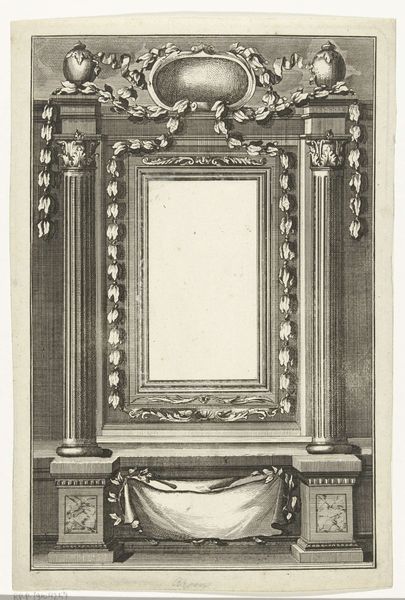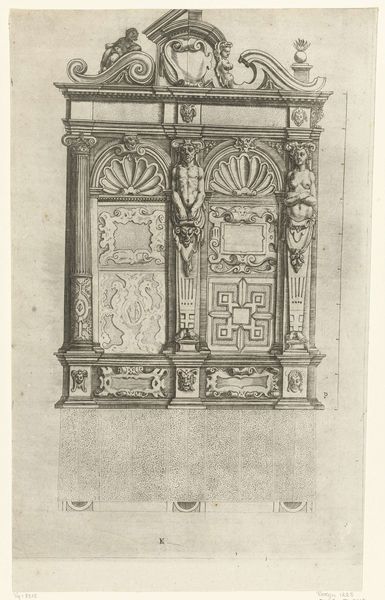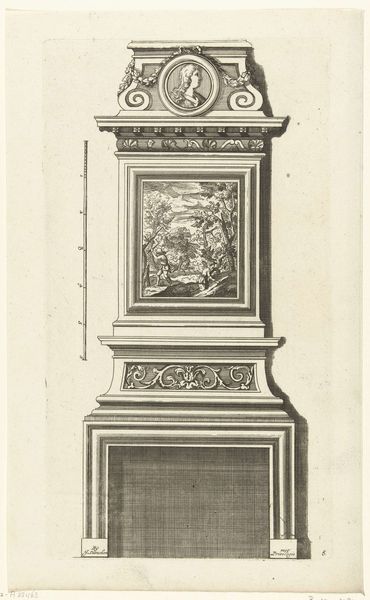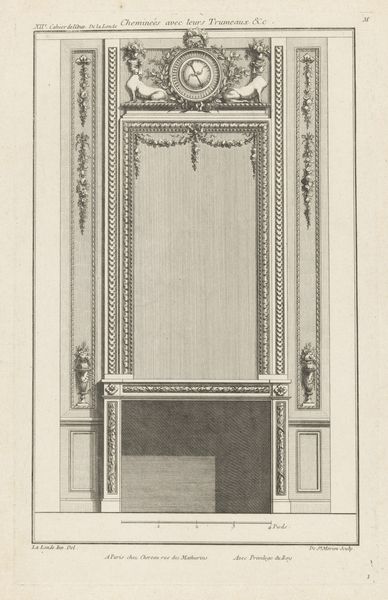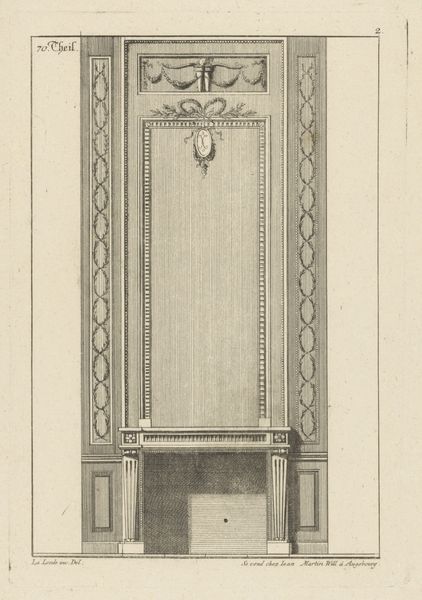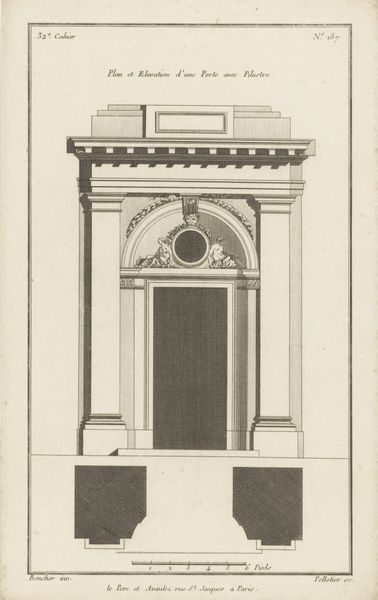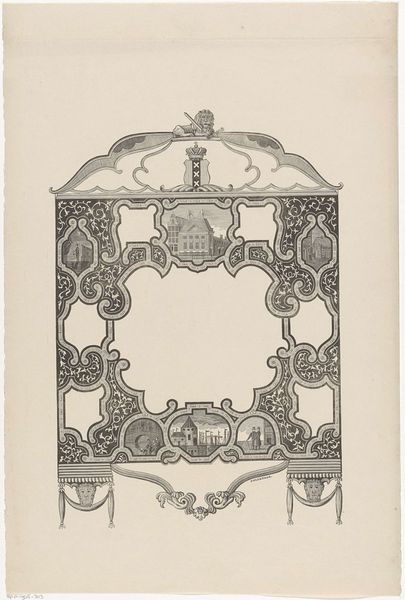
drawing, print, paper, ink, engraving, architecture
#
drawing
#
baroque
# print
#
paper
#
ink
#
decorative-art
#
engraving
#
architecture
Dimensions: height 305 mm, width 182 mm
Copyright: Rijks Museum: Open Domain
Curator: Here we have Pieter Schenk’s “Schoorsteenmantel met drie spiegels,” created around 1680 to 1700. It’s currently held at the Rijksmuseum. The medium is listed as engraving, ink, and paper, primarily a drawing and print combination. Editor: My first thought is how starkly geometrical it is, yet also somehow frivolous. The stark lines combined with the mirrored elements suggests a real sense of bourgeois order and aspirational design. Curator: Absolutely, the geometry isn’t accidental. We are looking at a design print. So the focus is function meeting design – it illustrates not just the chimney piece but the material aspiration of its patron, showing how such things are conceived and made in the baroque period. This was likely used by artisans as a template. Editor: Yes, and looking at the lines, they’re precise. The textures are limited by the engraving process, creating tonal variation with tightly-spaced lines, almost like hatch marks in the rendering of the forms. There's a conscious effort to evoke volume and shadow with limited resources. Curator: Consider how prints democratized art and design, though. Schenk isn’t just creating a beautiful drawing. This print allowed for the dissemination of baroque design ideas beyond elite circles. It allowed for upwardly mobile craftsmen to meet popular demand. It shifts the agency toward production of a specific consumer good rather than towards aesthetics in and of themselves. Editor: But within that democratization, you also see the constraints of form – symmetry is a critical aspect here. The echoing oval and rectangular shapes guide the eye vertically, emphasizing the architectural structure and decorative detail, creating an interesting sense of verticality despite it just being an engraving. Curator: Very true. One can almost feel the artist pushing against the constraints of his medium, elevating what was simply a manufacturing drawing to its highest artistic realization. It really does embody the interplay between functionality and beauty that epitomizes baroque taste and production of its design. Editor: I find the engraving method in its details of this period always so remarkable, regardless of function, but with your explanation, the artistic rigor that can make commerce itself seem an artistic accomplishment makes greater sense now. Curator: Yes, precisely, a testament to how societal structures impact material culture. Editor: Indeed, thank you for illuminating it through a materialist lens!
Comments
No comments
Be the first to comment and join the conversation on the ultimate creative platform.
